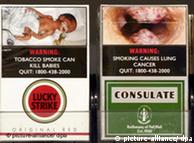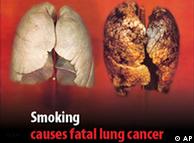Alcohol’s Good for You? Some Scientists Doubt It

By now, it is a familiar litany. Study after study suggests that alcohol in moderation may promote heart health and even ward off diabetes and dementia. The evidence is so plentiful that some experts consider moderate drinking — about one drink a day for women, about two for men — a central component of a healthy lifestyle.
Readers' Comments
Readers shared their thoughts on this article.
But what if it’s all a big mistake?
For some scientists, the question will not go away. No study, these critics say, has ever proved a causal relationship between moderate drinking and lower risk of death — only that the two often go together. It may be that moderate drinking is just something healthy people tend to do, not something that makes people healthy.
“The moderate drinkers tend to do everything right — they exercise, they don’t smoke, they eat right and they drink moderately,” said Kaye Middleton Fillmore, a retired sociologist from the University of California, San Francisco, who has criticized the research. “It’s very hard to disentangle all of that, and that’s a real problem.”
Some researchers say they are haunted by the mistakes made in studies about hormone replacement therapy, which was widely prescribed for years on the basis of observational studies similar to the kind done on alcohol. Questions have also been raised about the financial relationships that have sprung up between the alcoholic beverage industry and many academic centers, which have accepted industry money to pay for research, train students and promote their findings.
“The bottom line is there has not been a single study done on moderate alcohol consumption and mortality outcomes that is a ‘gold standard’ kind of study — the kind of randomized controlled clinical trial that we would be required to have in order to approve a new pharmaceutical agent in this country,” said Dr. Tim Naimi, an epidemiologist with the Centers for Disease Control and Prevention.
Even avid supporters of moderate drinking temper their recommendations with warnings about the dangers of alcohol, which has been tied to breast cancer and can lead to accidents even when consumed in small amounts, and is linked with liver disease, cancers, heart damage and strokes when consumed in larger amounts.
“It’s very difficult to form a single-bullet message because one size doesn’t fit all here, and the public health message has to be very conservative,” said Dr. Arthur L. Klatsky, a cardiologist in Oakland, Calif., who wrote a landmark study in the early 1970s finding that members of the Kaiser Permanente health care plan who drank in moderation were less likely to be hospitalized for heart attacks than abstainers. (He has since received research grants financed by an alcohol industry foundation, though he notes that at least one of his studies found that alcohol increased the risk of hypertension.)
“People who would not be able to stop at one to two drinks a day shouldn’t drink, and people with liver disease shouldn’t drink,” Dr. Klatsky said. On the other hand, “the man in his 50s or 60s who has a heart attack and decides to go clean and gives up his glass of wine at night — that person is better off being a moderate drinker.”
Health organizations have phrased their recommendations gingerly. The American Heart Association says people should not start drinking to protect themselves from heart disease. The 2005 United States dietary guidelines say that “alcohol may have beneficial effects when consumed in moderation.”
The association was first made in the early 20th century. In 1924, a Johns Hopkins biologist, Raymond Pearl, published a graph with a U-shaped curve, its tall strands on either side representing the higher death rates of heavy drinkers and nondrinkers; in the middle were moderate drinkers, with the lowest rates. Dozens of other observational studies have replicated the findings, particularly with respect to heart disease.
“With the exception of smoking and lung cancer, this is probably the most established association in the field of nutrition,” said Eric Rimm, an associate professor of epidemiology and nutrition at the Harvard School of Public Health. “There are probably at least 100 studies by now, and the number grows on a monthly basis. That’s what makes it so unique.”
Alcohol is believed to reduce coronary disease because it has been found to increase the “good” HDL cholesterol and have anticlotting effects. Other benefits have been suggested, too. A small study in China found that cognitively impaired elderly patients who drank in moderation did not deteriorate as quickly as abstainers. A report from the Framingham Offspring Study found that moderate drinkers had greater mineral density in their hipbones than nondrinkers. Researchers have reported that light drinkers are less likely than abstainers to develop diabetes, and that those with Type 2 diabetes who drink lightly are less likely to develop coronary heart disease.
But the studies comparing moderate drinkers with abstainers have come under fire in recent years. Critics ask: Who are these abstainers? Why do they avoid alcohol? Is there something that makes them more susceptible to heart disease?
Some researchers suspect the abstainer group may include “sick quitters,” people who stopped drinking because they already had heart disease. People also tend to cut down on drinking as they age, which would make the average abstainer older — and presumably more susceptible to disease — than the average light drinker.
In 2006, shortly after Dr. Fillmore and her colleagues published a critical analysis saying a vast majority of the alcohol studies they reviewed were flawed, Dr. R. Curtis Ellison, a Boston University physician who has championed the benefits of alcohol, hosted a conference on the subject. A summary of the conference, published a year later, said scientists had reached a “consensus” that moderate drinking “has been shown to have predominantly beneficial effects on health.”
The meeting, like much of Dr. Ellison’s work, was partly financed by industry grants. And the summary was written by him and Marjana Martinic, a senior vice president for the International Center for Alcohol Policies, a nonprofit group supported by the industry. The center paid for tens of thousands of copies of the summary, which were included as free inserts in two medical journals, The American Journal of Medicine and The American Journal of Cardiology.
In an interview, Dr. Ellison said his relationship with the industry did not influence his work, adding, “No one would look at our critiques if we didn’t present a balanced view.”
Dr. Fillmore and the co-authors of her analysis posted an online commentary saying the summary had glossed over some of the deep divisions that polarized the debate at the conference. “We also dispute Ellison and Martinic’s conclusions that more frequent drinking is the strongest predictor of health benefits,” they wrote.
(Dr. Fillmore has received support from the Alcohol Education and Rehabilitation Foundation of Australia, a nonprofit group that works to prevent alcohol and substance abuse.)
Dr. Ellison said Dr. Fillmore’s analysis ignored newer studies that corrected the methodological errors of earlier work. “She threw out the baby with the bathwater,” he said.
Meanwhile, two central questions remain unresolved: whether abstainers and moderate drinkers are fundamentally different and, if so, whether it is those differences that make them live longer, rather than their alcohol consumption.
Dr. Naimi of the C.D.C., who did a study looking at the characteristics of moderate drinkers and abstainers, says the two groups are so different that they simply cannot be compared. Moderate drinkers are healthier, wealthier and more educated, and they get better health care, even though they are more likely to smoke. They are even more likely to have all of their teeth, a marker of well-being.
“Moderate drinkers tend to be socially advantaged in ways that have nothing to do with their drinking,” Dr. Naimi said. “These two groups are apples and oranges.” And simply advising the nondrinkers to drink won’t change that, he said.
Some scientists say the time has come to do a large, long-term randomized controlled clinical trial, like the ones for new drugs. One approach might be to recruit a large group of abstainers who would be randomly assigned either to get a daily dose of alcohol or not, and then closely followed for several years; another might be to recruit people who are at risk for coronary disease.
But even the experts who believe in the health benefits of alcohol say this is an implausible idea. Large randomized trials are expensive, and they might lack credibility unless they were financed by the government, which is unlikely to take on the controversy. And there are practical and ethical problems in giving alcohol to abstainers without making them aware of it and without contributing to accidents.
Still, some small clinical trials are already under way to see whether diabetics can reduce their risk of heart disease by consuming alcohol. In Boston, researchers at Beth Israel Deaconess Medical Center are recruiting volunteers 55 and over who are at risk for heart disease and randomly assigning them to either drink plain lemonade or lemonade spiked with tasteless grain alcohol, while scientists track their cholesterol levels and scan their arteries.
In Israel, researchers gave people with Type 2 diabetes either wine or nonalcoholic beer, finding that the wine drinkers had significant drops in blood sugar, though only after fasting; the Israeli scientists are now working with an international team to begin a larger two-year trial.
“The last thing we want to do as researchers and physicians is expose people to something that might harm them, and it’s that fear that has prevented us from doing a trial,” said Dr. Sei Lee of the University of California, San Francisco, who recently proposed a large trial on alcohol and health.
“But this is a really important question,” he continued. “Because here we have a readily available and widely used substance that may actually have a significant health benefit — but we just don’t know enough to make recommendations.”


